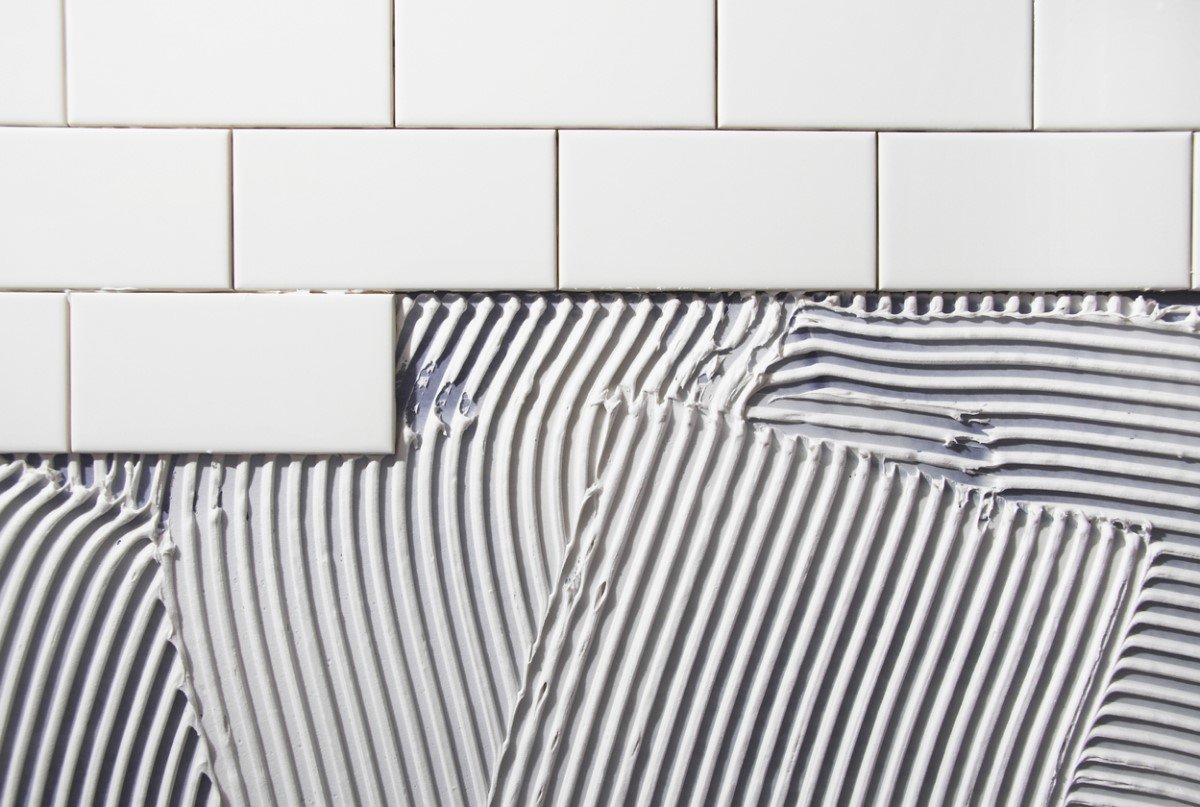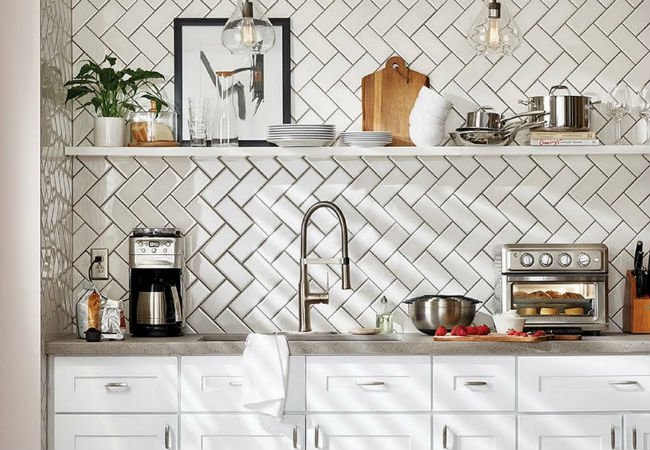

We may earn revenue from the products available on this page and participate in affiliate programs. Learn More ›
Q: I plan on installing tile on my entryway floor and kitchen backsplash. How much tile do I need to buy in each case?
A: You’re wise to mull over your tile needs before you go shopping for materials. Whether you’re installing tile on your foyer floor or on your kitchen or bathroom walls, determining how much tile you need is an essential first step. This calculation will help you ensure adequate tile coverage, budget accordingly for the project, and avoid return trips to your local home center. Conveniently, the steps for determining your tile needs are the same regardless of surface, so grab a measuring tape and a calculator and get started!

1. Measure the area you plan to tile.
Measure the area you’re tiling based on its shape:
- For square or rectangular areas, such as a wall or floor, multiply the length by the width to get the area in square feet. If the dimensions aren’t a whole number (i.e., the measurement includes feet and inches), divide the number of inches by 12 to convert it to feet, add that decimal to the number of feet, and complete the rest of the calculation as described above to get the area in square feet. Always round up your total to the nearest foot when the area includes a decimal.
The area of a 10-by-10-foot wall would be 100 square feet (10 x 10).
The area of a 6-foot-9-inch by 11-foot floor would be 74.25 square feet (6.75 x 11), which rounds up to 75 square feet.
- For round areas, such as a floor, square the radius (half of the space’s diameter) and multiply it by 3.14.
The area of a round floor with a diameter of 20 feet would be 314 square feet (3.14 x 10 x 10).
- For irregularly shaped areas, such as an L-shaped floor, view and treat the shape as two parts. Calculate the areas of the individual parts and add them together.
Let’s say your L-shaped floor can be divided into two rectangles, each measuring 6-by-3 feet. The area of the floor would be 36 feet (6 x 3 x 2).

2. Find the number of tile boxes or individual tiles you need based on the area of the space.
Now that you know the area that the tile should cover, figure out how much tile to buy to cover that area. The calculation depends on whether you plan to buy boxes of tile that contain multiple tiles (more common for standard-sized walls or floors) or individual tiles (for small floors or walls, such as those in a half bath).
- When buying tile boxes, divide the area’s square footage by the square footage listed on the box. The box will specify the total square footage that all the tiles in the box will cover. There’s no need to factor in the size of the tiles. Round up to the nearest whole number if the figure is a decimal.
If the area was 100 square feet, and each box provides 12.5 square feet of tile, you need eight boxes of tile (100 / 12.5).
- When buying individual tiles, you need to learn the square footage (or fraction of) that each one covers. Tiles sold individually will note the dimensions of the tile in inches on the packaging. Multiply the tile length by the width to figure the area that one tile will cover in square inches. Divide the result by 144 to convert it to square feet. Then, divide the area you’re tiling by the square footage of one tile to determine how many tiles you need. Again, round up to the nearest whole number.
If you choose six-by-six-inch tiles, each tile would cover 0.25 square feet (36 / 144). If the area of your wall or floor is 50 square feet, you would need 200 tiles at minimum to cover the area (50 / 0.25).

3. Finally, factor in between 10 to 20 percent overage.
Even for a tiling expert, buying the bare minimum amount of tile needed to cover the wall or floor isn’t going to cut it. Many scenarios warrant a little extra:
- You may need extra tiles to create tile fragments to fill in corners of the wall or floor where a full tile won’t fit.
- Some of the tiles you buy may already be broken on arrival. (It’s not uncommon for two to three percent of tiles sold in boxes to be broken or chipped!)
- You may snap a tile while cutting or laying one, or repairing one that has cracked.
- You may need a fresh tile to replace one that comes loose after install.
- Your tile may get discontinued down the road. If tile of the specific color or style you chose is later discontinued, you’ll be relieved to have some matching tiles on hand to use as replacements; without them, you may have to retile the whole floor or wall or replace faulty tiles with tiles that don’t match those already installed.
Buying at least 10 percent more tile than you calculated should cover you. Multiply the tile figure you calculated in the previous step by 1.1, and then round up if the figure is a decimal. So, if you figured you would need eight boxes of tile, buy nine boxes instead (8 x 1.1). If you calculated the need for 200 tiles, buy 220 instead (200 x 1.1).
Budget up to 20 percent of a buffer if you’re attempting a more unique pattern like herringbone or a diagonal offset. Installing tile diagonally in these patterns (i.e., at a 45-degree angle from the base of the wall or floor) instead of horizontally (where the edge of the tile meets the edge of the floor or wall) generally leaves more tile fragments.
